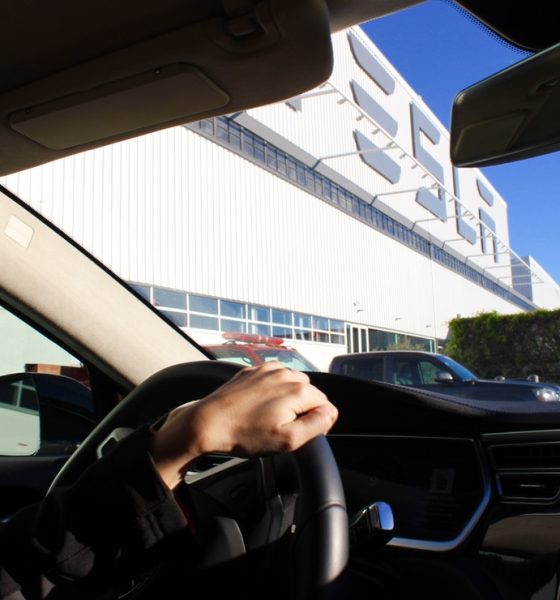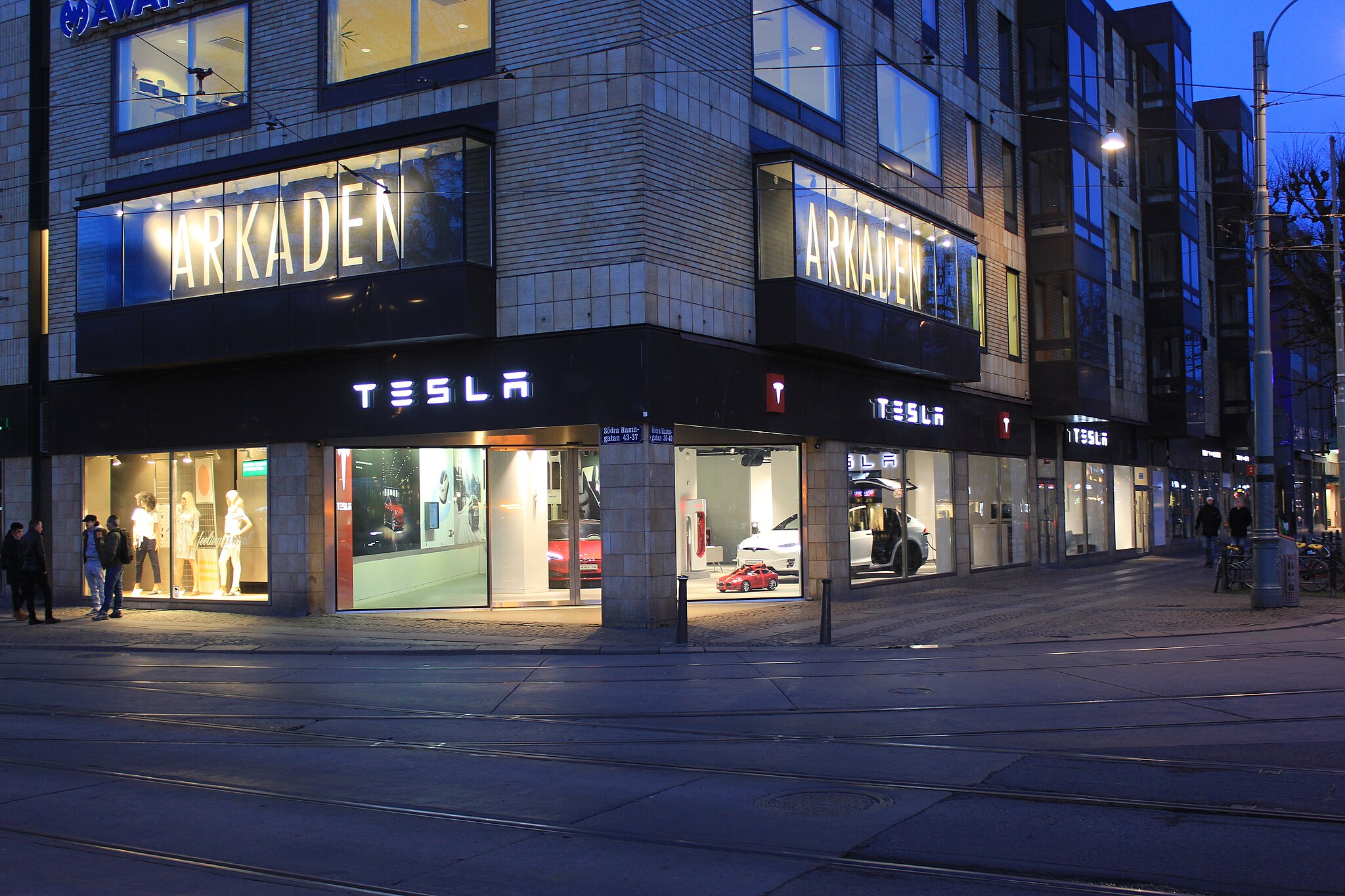

News
Tesla will replace 2012 Model S passenger airbags following Takata recall
Tesla sent an email to Model S owners on Tuesday notifying customers that an industry-wide recall made by airbag maker, Takata, will affect passenger airbags on the 2012 Model S. The notification indicates that the recall only affected 2012 Model S vehicles located in areas of the United States subject to high humidity, however Tesla will be replacing passenger airbags worldwide on Model S vehicles produced during that year as a precautionary measure.
Tesla’s Roadster, Model X and Model S produced between 2013 and late 2016 will not be impacted by the Takata airbag recall. However, the Silicon Valley electric car maker points out that “Model S vehicles produced through late 2016 are expected to eventually be recalled” but owners need not take any action now, until further notice from Tesla.
We’ve provided the recall announcement made by Tesla in its entirety below.
As part of a recent expansion of the industry-wide recall of Takata airbag inflators, the passenger airbags in certain 2012 Model S vehicles are now affected by the recall, and Tesla will be replacing them. Although the Takata recall currently only applies to 2012 Model S vehicles located in regions of the United States designated as high humidity, Tesla will replace the passenger airbags in all 2012 Model S vehicles globally. The safety of our customers is paramount and Tesla is taking this action even though there have been no airbag ruptures or other related incidents in any of its vehicles.
If you own a 2012 Model S vehicle, Tesla will contact you to schedule your replacement service. At this time there is no immediate action that you need to take.
As with the tens of millions of other vehicles with Takata airbags, this recall is taking place according to the schedule determined by the United States National Highway Traffic Safety Administration (NHTSA). Tesla intends to follow the same schedule for replacements in other countries as well – even where local regulators have not required a recall. This schedule ensures that customers will have sufficient time to replace recalled airbags before they present a risk to safety, due to the fact that the inflators only become defective based on a number of different factors, including their age.
Although the current recall only applies to 2012 Model S vehicles, the passenger airbags of all Model S vehicles produced through late 2016 are expected to eventually be recalled. If you own a Model S produced between 2013 and 2016, your airbags are safe, and you do not need to take any action until you receive further notice from Tesla. As noted by NHTSA, customers do not need to be concerned about Takata inflators before they receive a recall notice. Nevertheless, for convenience and peace of mind, Tesla will make every effort to proactively replace the airbags of all affected vehicles even before they are recalled. This will be performed as parts supply allows, and at this time you do not need to take any action.
The recalls will not affect any Tesla vehicles currently being produced, Model S vehicles that were produced after late 2016, or any Tesla Roadster or Model X vehicles. These vehicles do not have the type of airbag inflator that is subject to the recall.
For more information, FAQs, and other details related to this recall, please visit the Recall Information page. If you need additional assistance, you can also contact us by phone at (877) 798‑3752 or by email at ServiceHelpNA@tesla.com.
Thank you for being a Tesla customer and working with us to ensure your safety. We apologize for any inconvenience.

Elon Musk
Delaware Supreme Court reinstates Elon Musk’s 2018 Tesla CEO pay package
The unanimous decision criticized the prior total rescission as “improper and inequitable,” arguing that it left Musk uncompensated for six years of transformative leadership at Tesla.

The Delaware Supreme Court has overturned a lower court ruling, reinstating Elon Musk’s 2018 compensation package originally valued at $56 billion but now worth approximately $139 billion due to Tesla’s soaring stock price.
The unanimous decision criticized the prior total rescission as “improper and inequitable,” arguing that it left Musk uncompensated for six years of transformative leadership at Tesla. Musk quickly celebrated the outcome on X, stating that he felt “vindicated.” He also shared his gratitude to TSLA shareholders.
Delaware Supreme Court makes a decision
In a 49-page ruling Friday, the Delaware Supreme Court reversed Chancellor Kathaleen McCormick’s 2024 decision that voided the 2018 package over alleged board conflicts and inadequate shareholder disclosures. The high court acknowledged varying views on liability but agreed rescission was excessive, stating it “leaves Musk uncompensated for his time and efforts over a period of six years.”
The 2018 plan granted Musk options on about 304 million shares upon hitting aggressive milestones, all of which were achieved ahead of time. Shareholders overwhelmingly approved it initially in 2018 and ratified it once again in 2024 after the Delaware lower court struck it down. The case against Musk’s 2018 pay package was filed by plaintiff Richard Tornetta, who held just nine shares when the compensation plan was approved.
A hard-fought victory
As noted in a Reuters report, Tesla’s win avoids a potential $26 billion earnings hit from replacing the award at current prices. Tesla, now Texas-incorporated, had hedged with interim plans, including a November 2025 shareholder-approved package potentially worth $878 billion tied to Robotaxi and Optimus goals and other extremely aggressive operational milestones.
The saga surrounding Elon Musk’s 2018 pay package ultimately damaged Delaware’s corporate appeal, prompting a number of high-profile firms, such as Dropbox, Roblox, Trade Desk, and Coinbase, to follow Tesla’s exodus out of the state. What added more fuel to the issue was the fact that Tornetta’s legal team, following the lower court’s 2024 decision, demanded a fee request of more than $5.1 billion worth of TSLA stock, which was equal to an hourly rate of over $200,000.
Delaware Supreme Court Elon Musk 2018 Pay Package by Simon Alvarez
News
Tesla Cybercab tests are going on overdrive with production-ready units
Tesla is ramping its real-world tests of the Cybercab, with multiple sightings of the vehicle being reported across social media this week.

Tesla is ramping its real-world tests of the Cybercab, with multiple sightings of the autonomous two-seater being reported across social media this week. Based on videos of the vehicle that have been shared online, it appears that Cybercab tests are underway across multiple states.
Recent Cybercab sightings
Reports of Cybercab tests have ramped this week, with a vehicle that looked like a production-ready prototype being spotted at Apple’s Visitor Center in California. The vehicle in this sighting was interesting as it was equipped with a steering wheel. The vehicle also featured some changes to the design of its brake lights.
The Cybercab was also filmed testing at the Fremont factory’s test track, which also seemed to involve a vehicle that looked production-ready. This also seemed to be the case for a Cybercab that was spotted in Austin, Texas, which happened to be undergoing real-world tests. Overall, these sightings suggest that Cybercab testing is fully underway, and the vehicle is really moving towards production.
Production design all but finalized?
Recently, a near-production-ready Cybercab was showcased at Tesla’s Santana Row showroom in San Jose. The vehicle was equipped with frameless windows, dual windshield wipers, powered butterfly door struts, an extended front splitter, an updated lightbar, new wheel covers, and a license plate bracket. Interior updates include redesigned dash/door panels, refined seats with center cupholders, updated carpet, and what appeared to be improved legroom.
There seems to be a pretty good chance that the Cybercab’s design has been all but finalized, at least considering Elon Musk’s comments at the 2025 Annual Shareholder Meeting. During the event, Musk confirmed that the vehicle will enter production around April 2026, and its production targets will be quite ambitious.
News
Tesla gets a win in Sweden as union withdraws potentially “illegal” blockade
As per recent reports, the Vision union’s planned anti-Tesla action might have been illegal.

Swedish union Vision has withdrawn its sympathy blockade against Tesla’s planned service center and showroom in Kalmar. As per recent reports, the Vision union’s planned anti-Tesla action might have been illegal.
Vision’s decision to pull the blockade
Vision announced the blockade in early December, stating that it was targeting the administrative handling of Tesla’s facility permits in Kalmar municipality. The sympathy measure was expected to start Monday, but was formally withdrawn via documents sent to the Mediation Institute and Kalmar Municipality last week.
As noted in a Daggers Arbete report, plans for the strike were ultimately pulled after employer group SKR highlighted potential illegality under the Public Employment Act. Vision stressed its continued backing for the Swedish labor model, though Deputy negotiation manager Oskar Pettersson explained that the Vision union and IF Metall made the decision to cancel the planned strike together.
“We will not continue to challenge the regulations,” Petterson said. “The objection was of a technical nature. We made the assessment together with IF Metall that we were not in a position to challenge the legal assessment of whether we could take this particular action against Tesla. Therefore, we chose to revoke the notice itself.”
The SKR’s warning
Petterson also stated that SKR’s technical objection to the Vision union’s planned anti-Tesla strike framed the protest as an unauthorized act. “It was a legal assessment of the situation. Both for us and for IF Metall, it is important to be clear that we stand for the Swedish model. But we should not continue to challenge the regulations and risk getting judgments that lead nowhere in the application of the regulations,” he said.
Vision ultimately canceled its planned blockade against Tesla on December 9. With Vision’s withdrawal, few obstacles remain for Tesla’s long-planned Kalmar site. A foreign electrical firm completed work this fall, and Tesla’s Careers page currently lists a full-time service manager position based there, signaling an imminent opening.








